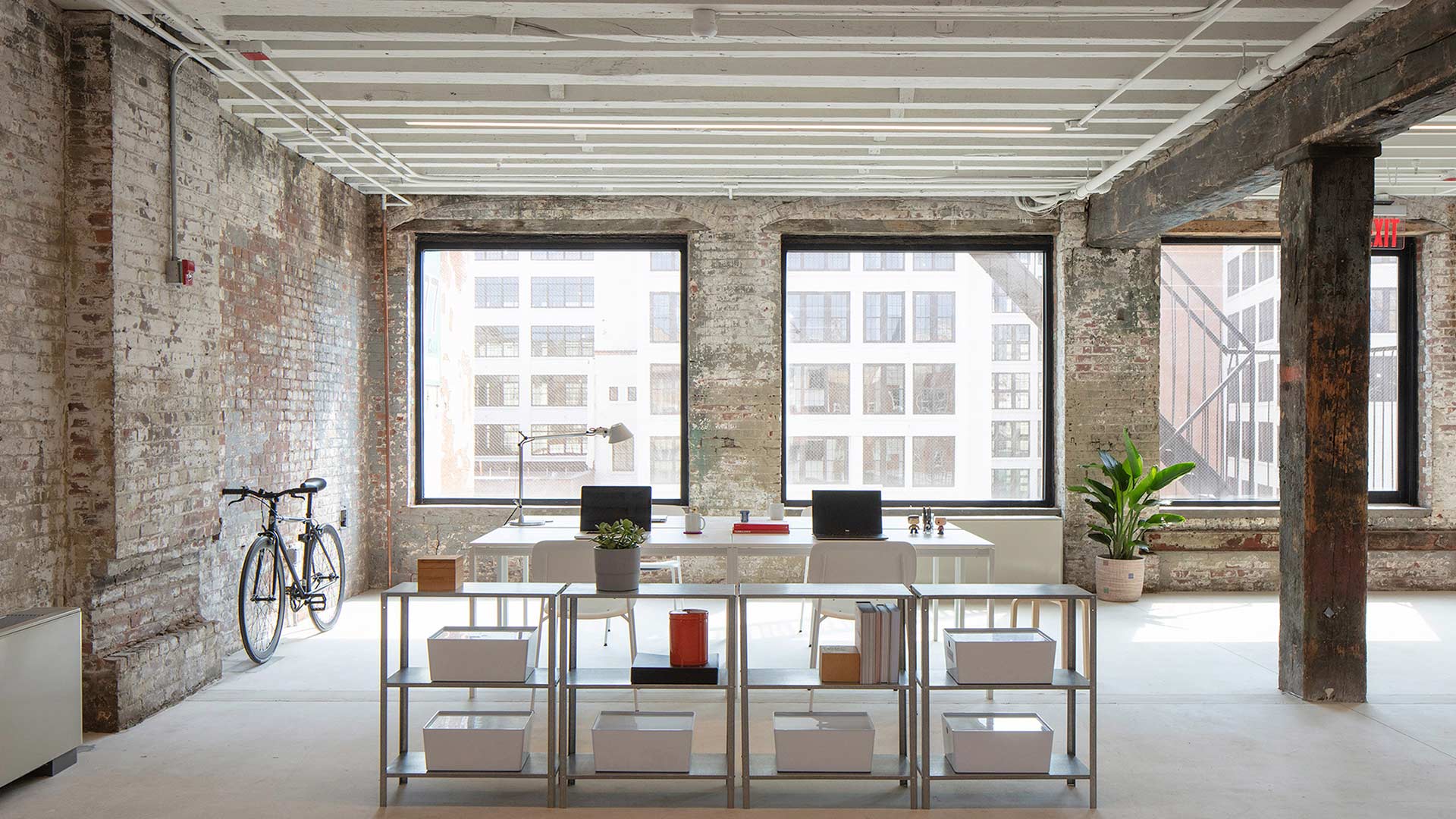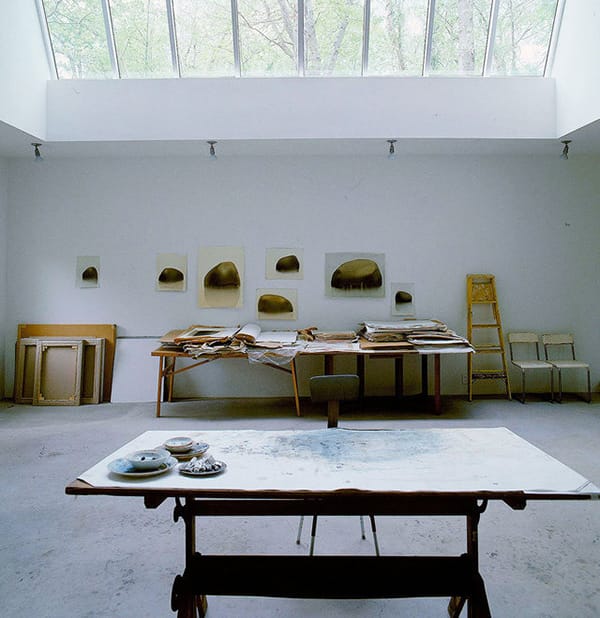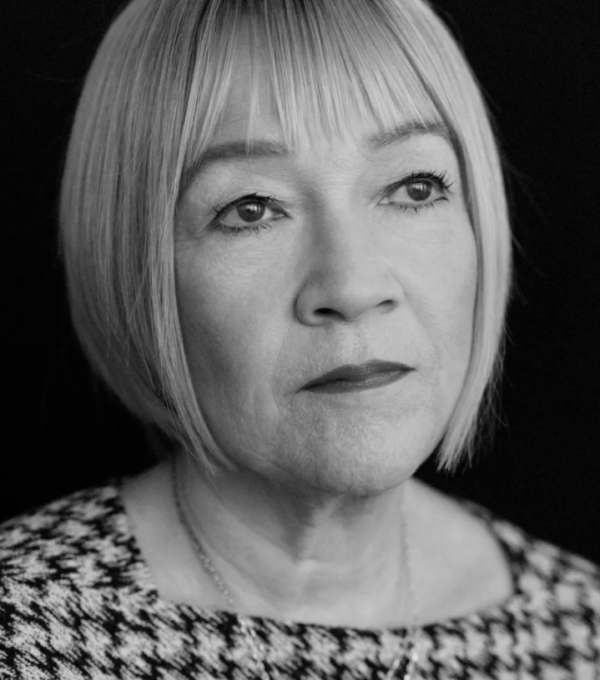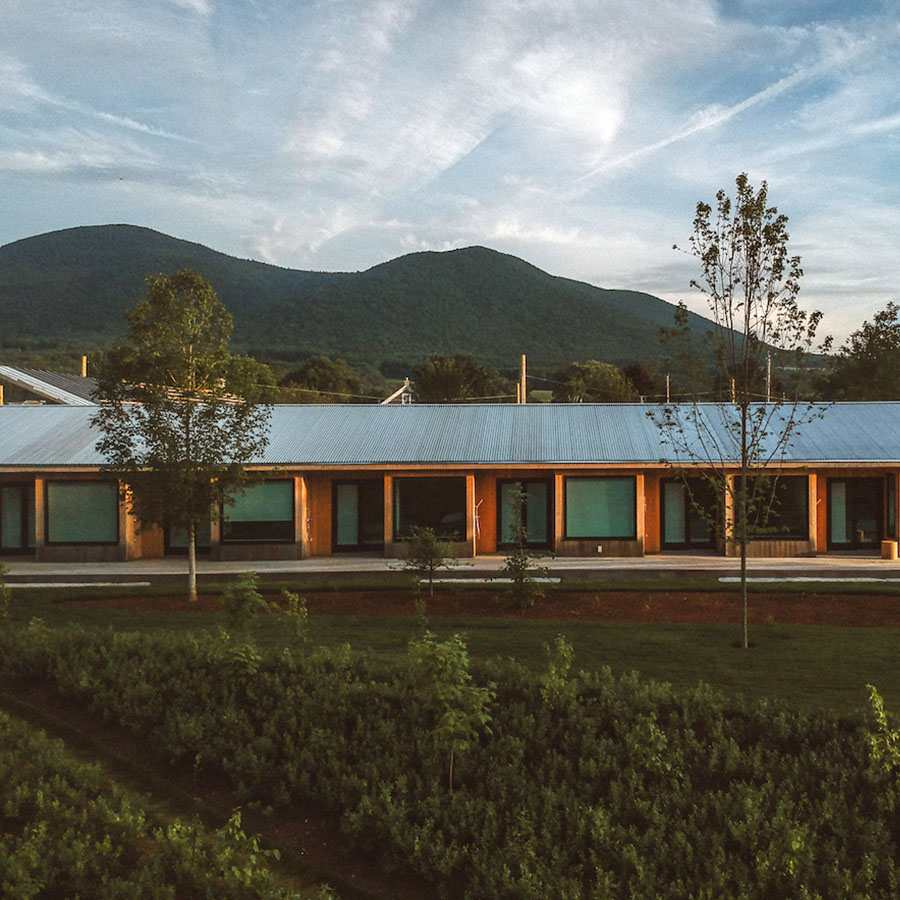Is workplace dead? How do companies optimize performance when creativity is at the heart of their business? There are loads of quick fixes to getting people safely back to their workplaces but if innovation is crucial for your business the focus needs to shift from safety to engagement, according to Woods Bagot’s global workplace design leader, Amanda Stanaway.
Stanaway and her colleagues work with tech, finance, and government organizations around the world. Through a series of roundtables they consulted Woods Bagot’s market leading clients and learned that they are looking further ahead than the immediate return and intently focused on two things: new ways of working, and behavioral and cultural opportunities and changes.
Forecasting the long term, sustainable future of workplace, Stanaway and her colleagues have reimagined four workplace models where culture and performance – not safety – are the focus. “To get the most from their human capital we’ve built some awesome workspaces for clients but it’s obvious they won’t be going back to working as they did before,” says Stanaway.
The immediate recovery demands the rebuilding of trust between colleagues and addressing the points of anxiety. Trust to re-engage. And then reform: re-setting how and when we work. And, critically, from where. What is the power of place, and how integral is workplace to organizational culture? To help clients restore business productivity with long term, sustainable solutions, Stanway says flexibility of approach will be key. “Simply reducing density and cleaning more is not giving companies a good reason to bring people back to the workplace,” she said.
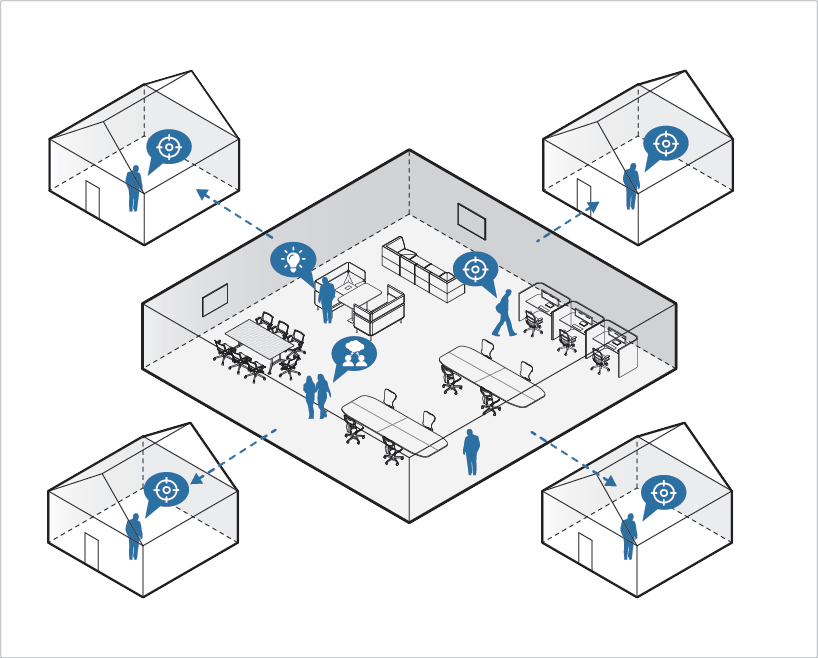
The power of place can’t be underestimated, and while many organisations will move forward with more flexible strategies than before they will continue to believe in the importance of the office for valuable social interaction as well as being able to collaborate and ideate face to face.
Despite employers having witnessed how it’s possible for their teams to work in other ways and change their leadership from command and control overseeing, says Stanaway, this won’t negate their people yearning for and needing an office and sense of purpose belonging in the future.
“After this forced period of working remotely we will hunger for spaces with deeper immersive experiences for working with one another,” she said.
Creativity is essential to the entrepreneurship that sustains the world’s best companies, big or small. In response to COVID-19, working life instantly shifted from our offices and co-working to working from home. While this trend has been on the rise over recent years the immediate mass shift exposed the benefits (and challenges) to a far wider range of us than ever before.
“After this forced period of working remotely we will hunger for spaces with deeper immersive experiences for working with one another.”
The experience will lead to significant change in our work habits and expectations. As we become comfortable with working remotely, more of us will expect to do so more often and it will be one of the most significant impacts of Covid-19 on how we design and use our workplaces in the future. The WFH experience will see HOME forming an extension of the WORK more so than ever. The challenge is how to execute this while ensuring organizations have physical time together to build their culture.
To anticipate this impact on workplace design, Woods Bagot’s reimagined workplace models see working from home playing a role in them all, to greater or lesser degrees. The reality for most organizations will likely be a combination of two or more of these models.
Model 1: Culture Club
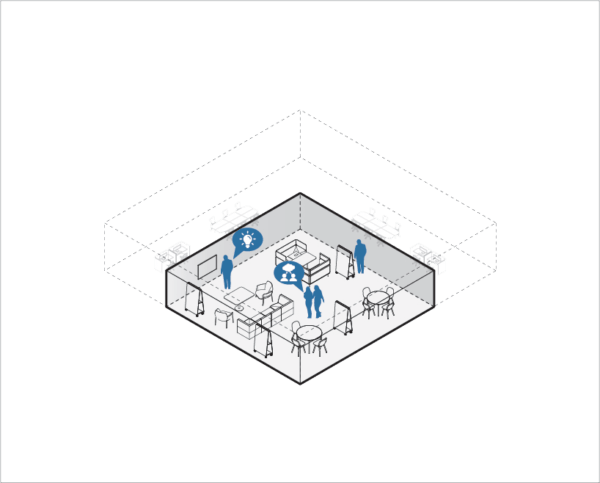
Office as the collaboration hub, the vital ingredient for creativity in complex problem solving.
As great as the technology is improving, and as hard as we try, creative collaboration suffers in a virtual environment. It will continue to evolve but before it does we’ll see the physical office becoming a more club-like space, a place of creative interaction.
In this model, the workstation transforms to a variety of adaptable settings for collaboration, leaving quiet, focused or process work to be accomplished remotely at our homes. Focus work is done from home and people only travel to the office when it is necessary or preferable to collaborate physically with colleagues with buzz and energy. Imagine a workplace with no desks!
Model 2: In and Out
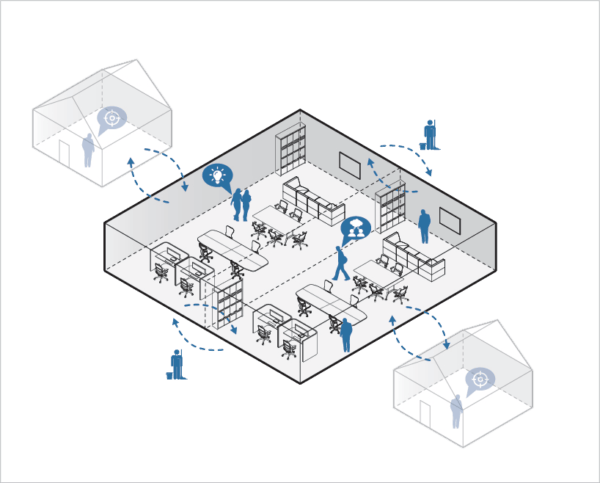
A percentage of the population in at any one time.
When we talk about ‘agile working’, we’re talking about creating freedom for people to decide how, when, and where they work. Agile workplace experiences include flexible start and finish times, shared spaces, and remote working. For employers, the strategy offers benefits in space optimization.
The future of work in this model will be a more hybrid version of ABW or agile which de-densifies and manages the workplace population over times and days of the week through a complementary combination of working from home and co-located agile staff. Relying on rotating teams that best support the interactions and activities, it provides more space for people (because there are fewer of them on site) and maintains collaboration spaces at a lower density at any given time.
Model 3: Community Nodes
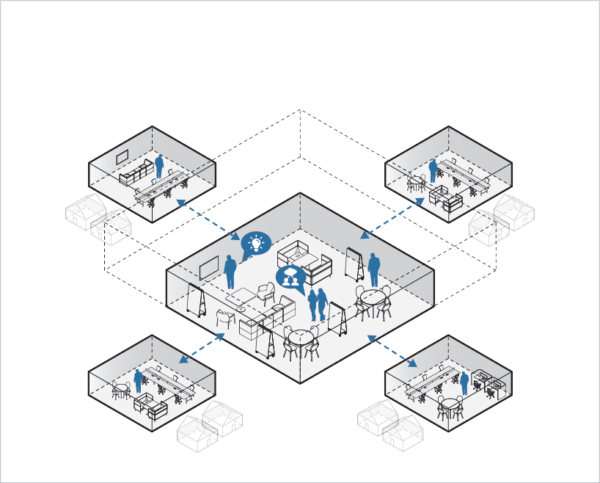
The decentralized HQ, where people work in disaggregated offices of their employer, located closer to their homes.
With our reduced desire to use public transport and be among large groups of people, the future in this model is more distributed than consolidated. Its focus is on smaller satellite, community based, offices. The offices will be closer to people’s homes making significant impact on the ‘time’ challenges of the old working models and supporting people to ‘live and work locally’ in tribes.
With most people working from their local community nodes the central HQ office becomes smaller and serves as the Culture Club (model 1) bringing people together as required, from their community nodes.
This approach balances the social benefits of being physically co-located with the efficiency of proximity to home. It also has the potential to reduce rent (in lower cost distributed locations.
Model 4: Collectives
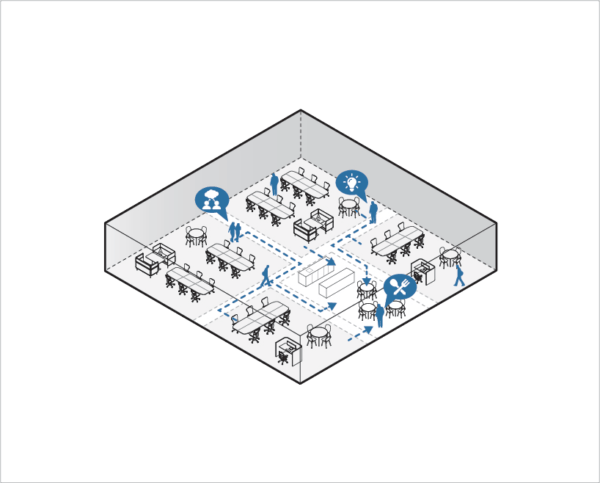
Defined, cellular spaces are created for people to work together in small clusters.
Does COVID-19 mean the demise of open plan offices? Not at all. This future office maintains open plan layouts but reduces large groups to smaller team communities. A version of co-working, in this model the collectives coexist within the boundary of the centralized office. While the boundary is flexible the intent is to reduce the scale of a massive workplace, bringing the circle of trust closer – the people you need to be with.
Anchoring teams to studio-sized neighborhoods within a larger office minimizes exposure to people. Long term exposure between the studio communities is limited, while amenities can remain shared. The model relies on increased cleaning and hygiene regimes and associated operational discipline. The spaces between the studio teams could include hygienic ‘bump’ opportunities by way of shared staff amenities – much the way the singular super hub kitchen functioned in the larger shared floorplate.
Agility Matters
In pursuit of engagement and performance, allowing people to have choice and looking after their wellbeing matter. When flexibility and diversity drive workplace strategies, companies can curate, change, and leverage different models of occupation to allow business to continue.
Work from home, remote working hubs, flexible working, and staggered shifts are options in an agile workplace strategy. Business performance is supported through the power of people and organizational culture and physical space remains the connective glue.
